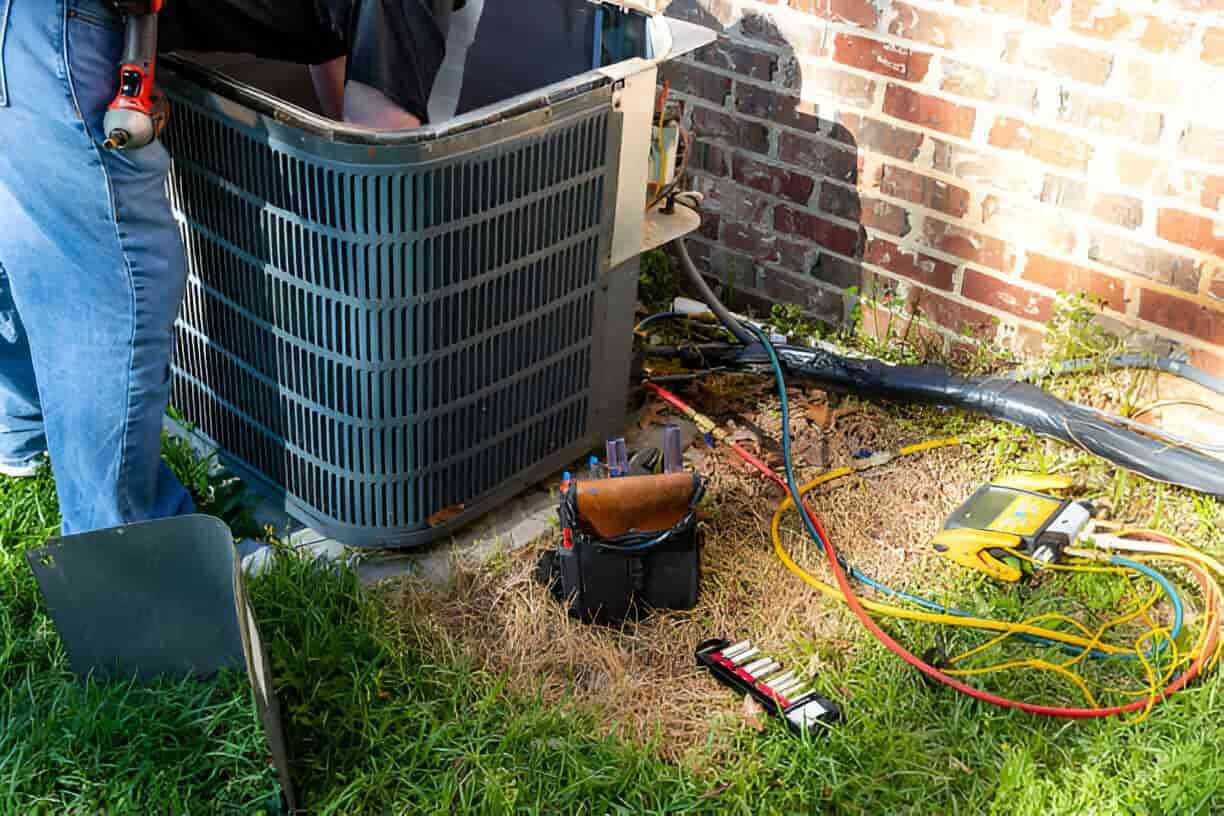AC Repair in Clearwater, FL


Why timely AC repair matters in Clearwater, FL
Clearwater’s coastal, humid environment puts continuous stress on cooling systems. High run-times, salt-air corrosion, and frequent storms can accelerate component wear and increase the risk of refrigerant leaks and electrical failures. Prompt repair:
- Prevents small faults from becoming compressor-destroying failures
- Restores efficiency to lower energy use during peak cooling months
- Reduces indoor humidity and prevents mold growth in ductwork and coils
Common AC problems in Clearwater homes
Common AC repair issues in Clearwater reflect local conditions and typical household systems (split systems and heat pumps):
- No cooling or reduced cooling — often caused by low refrigerant, compressor problems, or airflow restrictions
- Frequent short cycling — can be caused by a failing capacitor, thermostat issues, or incorrect refrigerant charge
- Unit not turning on — tripped breakers, blown fuses, bad contactors, or electrical control failures
- Strange noises — bearing failure, loose components, or failing compressor
- Water leaks / condensate overflow — clogged condensate drains, damaged drain pans, or improper slope
- Refrigerant leaks — common in coastal areas due to corrosion at fittings and evaporator coil degradation
Initial diagnostic steps you can expect
Qualified technicians follow a methodical diagnostic process to find root causes rather than chasing symptoms:
- Visual inspection of indoor and outdoor units (corrosion, debris, drainage)
- Verify thermostat settings, power at the breaker, and disconnects
- Check air filter and basic airflow (return and supply registers)
- Electrical testing: measure voltage and current to compressors, contactors, and capacitors
- Refrigerant system checks: measure pressures, superheat/subcooling, and perform leak detection if pressures are abnormal
- Inspect coils and blower motor for dirt or mechanical issues
- Document findings and outline repair recommendations with parts needed and estimated timelines
Troubleshooting homeowners can try safely
Before calling, try these safe, low-risk checks:
- Confirm thermostat is set to cool and fan is on auto
- Replace a noticeably dirty air filter
- Check the outdoor unit for visible debris or vegetation blocking airflow
- Check the main breaker and the outdoor disconnect for tripped switches
- Do not attempt electrical or refrigerant work yourself; refrigerant handling requires certification and electrical troubleshooting can be hazardous.
Component repairs and what they involve
- Compressor repair/replacement: The compressor is the heart of the refrigeration cycle. Failures often develop from lack of maintenance, overheating, or electrical damage. Replacing a compressor requires proper evacuation, oil and refrigerant handling, and careful matching of system components.
- Capacitors and contactors: These electrical components commonly fail from frequent starts/stops and storm-related power surges common in Clearwater. Replacements are typically quick diagnostics with measurable symptoms (reduced starting torque, humming).
- Refrigerant leak repair: Technicians use electronic leak detectors, UV dye, or pressure tests to locate leaks. Repairs may include replacing sections of line set, brazing evaporator coils, or replacing small access valves, followed by evacuation and recharge to manufacturer specifications.
- Fan and blower motor service: Salt air and humidity can corrode fan motors and bearings. Repairs range from cleaning and lubrication to motor replacement.
- Control board and thermostat replacement: Moisture and power events can damage controls; replacement restores reliable communication between system components.
Diagnostic testing methods
- Electrical multimeter and clamp ammeter readings to assess current draw
- Pressure gauges for refrigerant circuit analysis and calculating superheat/subcooling
- Refrigerant leak detection with electronic sniffers or UV dye inspection
- Temperature split measurements across evaporator coils to indicate airflow or charge issues
- Condensate drain and pan inspections to identify blockages or damage
Typical response times for AC repair
- Emergency AC repair in Clearwater: In severe heat or total system failure, emergency response is prioritized and can often be arranged within hours depending on availability and local conditions (storm impacts can affect scheduling).
- Routine repairs: Most non-emergency repairs are scheduled within a day or two. Complex repairs that require ordered parts may extend timelines based on part availability and system complexity.
Warranty and parts information
- Manufacturer part warranties usually cover new component defects; duration varies by manufacturer and part type. Installation labor warranties are provider-specific and may cover workmanship for a set period.
- When major components are replaced (compressor, coil), technicians should confirm that new parts meet manufacturer specifications and do not void remaining system warranties.
- Refrigerant work must follow EPA rules for recovery and charging; certified technicians document refrigerant type and amounts for compliance and warranty records.
Preventing future breakdowns — Clearwater-focused tips
- Schedule seasonal preventive maintenance before the hottest months to catch wear caused by constant operation.
- Replace filters regularly and consider higher-efficiency pleated filters if your system supports them to reduce dust and coil fouling.
- Keep the outdoor unit clear of vegetation and rinse salt build-up from fins after storms or during spring cleaning to reduce corrosion.
- Install a surge protector for the outdoor unit to reduce the risk of capacitor and control board damage from storm-related power spikes.
- Ensure proper attic and duct insulation and sealing to reduce system run-times in humid weather.
- Consider annual refrigerant leak checks on older systems, as coastal humidity and salt can accelerate line corrosion.
Benefits of timely repair and proper maintenance
Prompt repair restores comfort, reduces energy costs by improving efficiency, and protects major components from premature failure. For Clearwater homes, where AC runtime is high and salt-air corrosion is a risk, regular maintenance and timely repairs extend equipment life and maintain better indoor air quality by controlling humidity and mold risk.
This overview outlines what to expect during AC repair in Clearwater, FL: common faults, the diagnostic process, typical component repairs, testing methods, response timelines, warranty considerations, and prevention strategies designed for coastal Florida conditions.
Service Areas


